Teaching
Professional Growth
Research
Astronomy in the News

Joseph S. Gallagher
Astronomy in the News
Astronomy in the News is an ongoing blog of astronomy related news stories. Until recently, these were posted for the benefit of my students to our course Blackboard (Bb) site. In order to maintain a single repository of these posts, I am now posting these to this website.
The Great American Eclipse
August 21, 2017
UCBA Viewing Event
Posted on Saturday, October 20, 2017 -
Brief timeline of events:
1916 - Prussian Academy of Sciences - Albert Einstein first theorized the existence of gravitational waves
1975 - D.C. hotel room - Rainer Weiss persuades Kip Thorne that GW may be detectable with lasers
1994 - Barry Barish secured funding from the National Science Foundation to build the twin facilities of the Laser Interferometer Gravitational-Wave Observatory (LIGO)
2015 - September - LIGO spots GW for the first time
2017 - August - GW170817 detected by LIGO and Fermi Space Telescope
2017 - October - Nobel Prize for Physics goes to Kip Thorne, Barry Barish, and Rainer Weiss
2017 - October - First analyses of GW170817 make an appearance
--------------------------------------------------------------------------------------------
Massive objects distort space-time. This is illustrated via a model below left. When multiple massive objects move in a periodic fashion, they produce gravitational waves (GWs), ripples in space-time (see second image below right). Strong GWs result from violent astrophysical events involving the most massive, compact objects like black holes and neutron stars in close orbit with one another leading to an ultimate merger. Though these events are cataclysmic, they are also very far away. As a result, the effect of these GWs on our local space-time as they pass the Earth is quite small.


Copyright: ESA–C.Carreau Credit: R. Hurt/Caltech-JPL
In order to detect gravitation waves you need two lasers operating at right angles to one another. When a GW passes, it stretched space in one direction, and compresses it in a direction perpendicular to the first. By using the two lasers to measure how distances change in the two orthogonal directions, you can detect the passing of a GW wave. The short video below delves into these details with some nice visuals. There are two facilities that make up LIGO. The one in Hanford pictured below, and the other in Livingston, LA. This is necessary because the detectors are so sensitive that they will pick up the tiniest vibrations of the Earth, e.g. everything from small earthquakes to the passing of large trucks. The two facilities needed to be far enough apart that they would not detect each other's false positives. Only detections of GW would be common to both detectors.

Credit: LIGO Laboratory
Up until the discovery of GW170817, four events had been detected by LIGO - all of them GWs formed in the merging of massive black holes (~20 solar masses). Given the nature of black holes, there is usually little to observe in terms of EM radiation from a black hole merger. This is not the case for a neutron star merger. However, the detection of GWs from merging neutron stars is trickier given that they each have masses less than 3 solar masses.
On the morning of August 17th, 2017, LIGO, in conjunction with the European Virgo Interferometer, detected a signal suggesting a source that was not merging BHs, but rather merging neutron stars. A mere later, NASA's Fermi Gamma-Ray Space Telescope detected a burst of gamma-rays from the same general region of the sky as LIGO's signal (see below). Now, there was a chance that this could have been a coincidence, but neither team was willing to make that bet. The LIGO-Virgo team put the word out to all observers that the chance existed to survey the debris left over by the neutron star merger. Astronomers from all over the world answered the call.

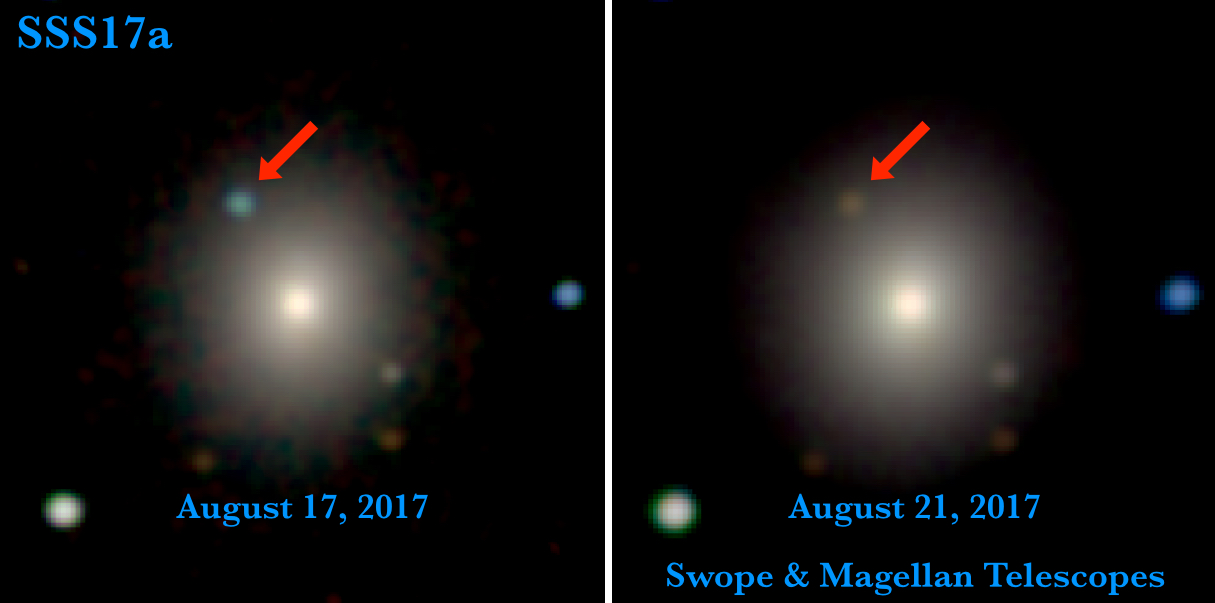
PHOTO: Sarah Wilkinson, Las Cumbres Observatory Credit: 1M2H/UC Santa Cruz and Carnegie Observatories/Ryan Foley
Among the things that we have learned from this event:
1. Since the gamma-ray and gravitational wave signal arrived at the same time, it confirms that GWs travel at the speed of light.
2. The near simultaneous detection of the short gamma-ray burst by Fermi confirms that these events are the result of merging neutron stars. I will be updating my notes for the Spring (see the slide from Spring 2017 below), to include the observational evidence provided by this event.
3. Although it has been theorized that the heaviest of elements were produced in neutron star mergers, it has never been confirmed ... until now. Spectroscopic observation of the event revealed signatures of heavy elements like gold and platinum.
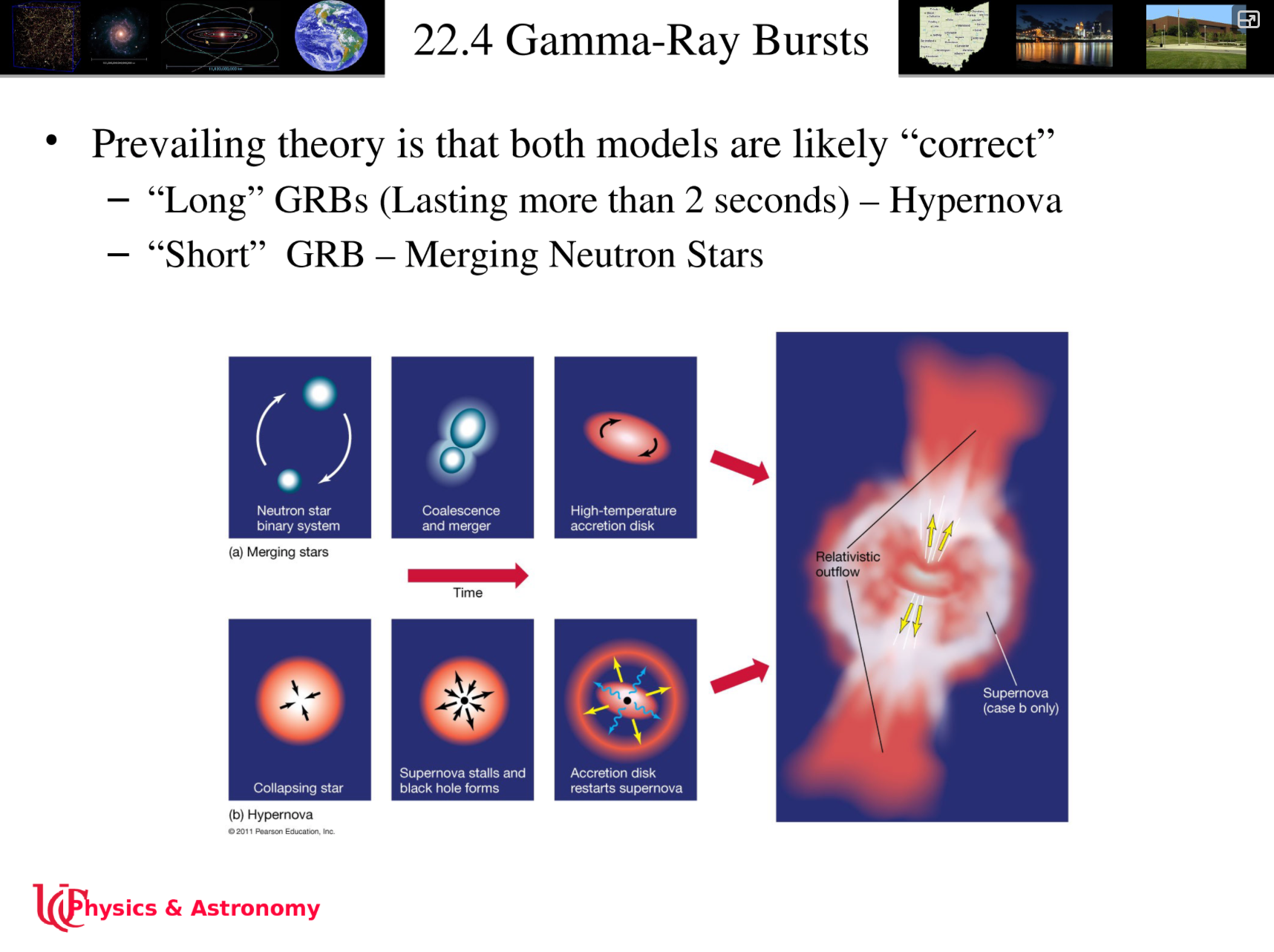
Posted Friday, October 6th, 2017 -
The novel Seveneves, by Neil Stephenson, begins "The Moon blew up without warning and for no apparent reason." The book then proceeds to describe humanity's scramble for survival when faced with almost certain extinction. A postdoctoral researcher in physics from Britain named Jason Cole decided to look into this scenario and see how it stacks up to reality. Follow the link below to see his analysis. The video below is one of his visuals.
https://jasmcole.com/2017/09/20/the-moon-blew-up-without-warning-and-for-no-apparent-reason/
Posted Wednesday, September 20, 2017 -
In 2006, NASA launched the New Horizon's Space Probe to perform a flyby study of the Pluto and its moons. The spacecraft arrived at Pluto in mid-2015 taking our best image of Pluto what's on the left, to what's on the right:
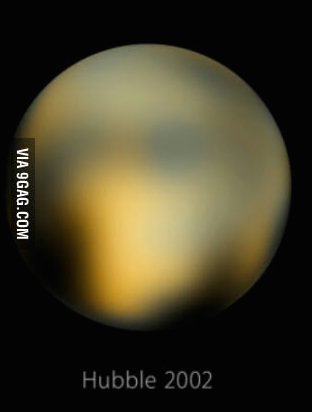

Now, the International Astronomy Union (IAU) has assigned names to fourteen previously unresolved geographical features (mount ranges, plains, valleys, craters, etc) on the surface of Pluto. See these features in the image below.
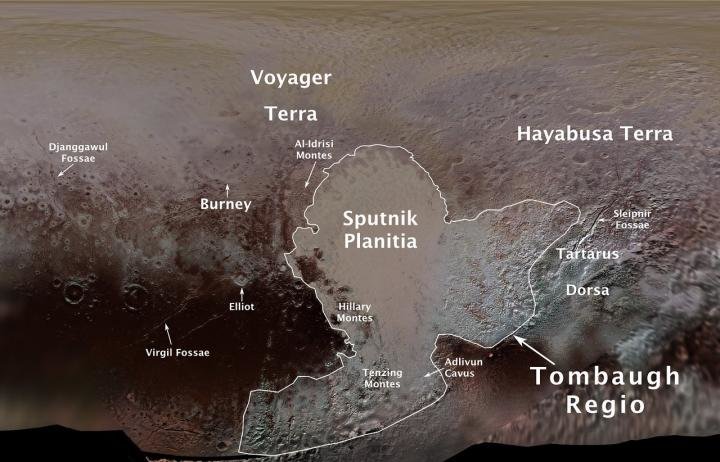
Credit: NASA/Johns Hopkins University Applied Physics Laboratory/SwRI/Ross Beyer
New Horizons is now en route to a Kuiper Belt Object, and is expected to arrive in 2019.
Posted Wednesday, September 3rd, 2017 -
From NYT:
"The Cassini spacecraft that has orbited Saturn for the last 13 years would weigh 4,685 pounds on Earth and, at 22 feet high, is somewhat longer and wider than a small moving van tipped on its rear. Bristling with cameras, antennas and other sensors, it is one of the most complex and sophisticated spy robots ever set loose in interplanetary space.
On Friday morning, the whole world will hear it die."
See the video describing the history of the man-made marvel: https://nyti.ms/2xRPLTN
Another video on its Grand Finale: https://youtu.be/xrGAQCq9BMU
Finish the article started above: https://nyti.ms/2xVTbG6
From NYT:
"The Cassini spacecraft that has orbited Saturn for the last 13 years would weigh 4,685 pounds on Earth and, at 22 feet high, is somewhat longer and wider than a small moving van tipped on its rear. Bristling with cameras, antennas and other sensors, it is one of the most complex and sophisticated spy robots ever set loose in interplanetary space.
On Friday morning, the whole world will hear it die."
See the video describing the history of the man-made marvel: https://nyti.ms/2xRPLTN
Another video on its Grand Finale: https://youtu.be/xrGAQCq9BMU
Finish the article started above: https://nyti.ms/2xVTbG6
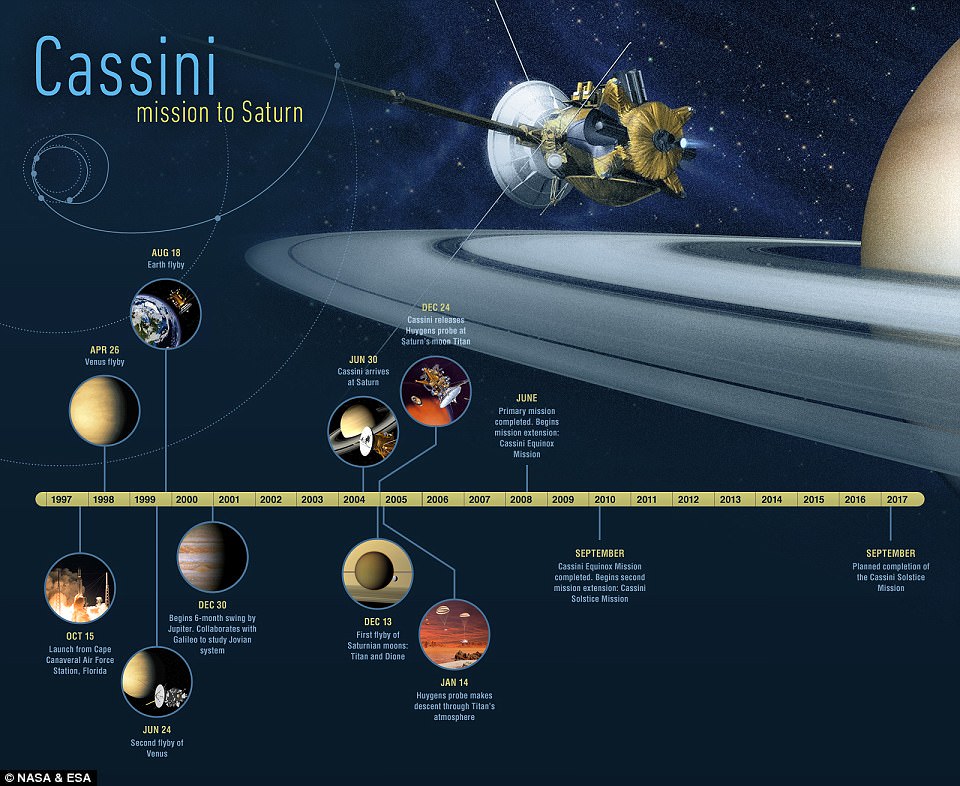
Posted Thursday, September 7th, 2017 -
One of the topics we will cover toward the end of the semester is the Sun, and the solar surface. Among the more prominent surface features on the Sun are sunspots. Sunspots are regions on the solar surface that are relatively cooler (~4000 K) than the surrounding surface (~5800 K). These cooler temperatures make these spots appear dark compared to the rest of the Sun.
The first image below shows the sunspots visible on the Sun from this past Tuesday, September 5th. These spots were so big that I was able to see them just before sunset with the naked eye. As you know, you should never look at the Sun without a solar filter. Although I would never advise anyone to do this, the evening in question was so hazy that I was able to see these sunspots without a protective solar filter - though I didn't look for more than a mere moment. This is incredibly rare as the brightness of the Sun nearly always overshadows any sunspots, but the incredible haziness and size of the sunspots made this evening an exception.
Sunspots are often associated with another cool solar surface feature - the solar flare. Flares are massive eruptions on the surface of the Sun that hurls charged solar material into space with enough energy to entirely break free of the Sun's gravitational and magnetic fields - we call these ejections coronal mass ejections (CMEs). The morning after I saw the sunspots pictured, NASA's Solar Dynamics Observatory (SDO) detected a doozy (see second image below). Solar flares are categorized into classes A, B, C, M, and X, with X being the most powerful. Subclasses range from 0-9, with 9 being the most powerful. The flare detected on Wednesday morning was an X9! The third image below shows this flare close up with the Earth included to set the scale. This sunspot produced three more M-class solar flares today.
NOAA forecasters estimate there is a 55% chance of polar geomagnetic storms on September 8th due to the CME (see animation) that was ejected during the X9 flare. These charged particles will be redirected by the Earth's magnetic field, ultimately moving through our atmosphere, and could disrupt shortwave communications and result in strong auroras. If you're in a dark place tomorrow night, be on the lookout for the northern lights!
The Sun has a fairly regular sunspot cycle of 11 years. This means the number of sunspots visible goes up, then down over a cycle of 11 years. We are currently approaching a minimum in this cycle (see graph below), and yet it appears the Sun is moving to it's minimum a little begrudgingly.
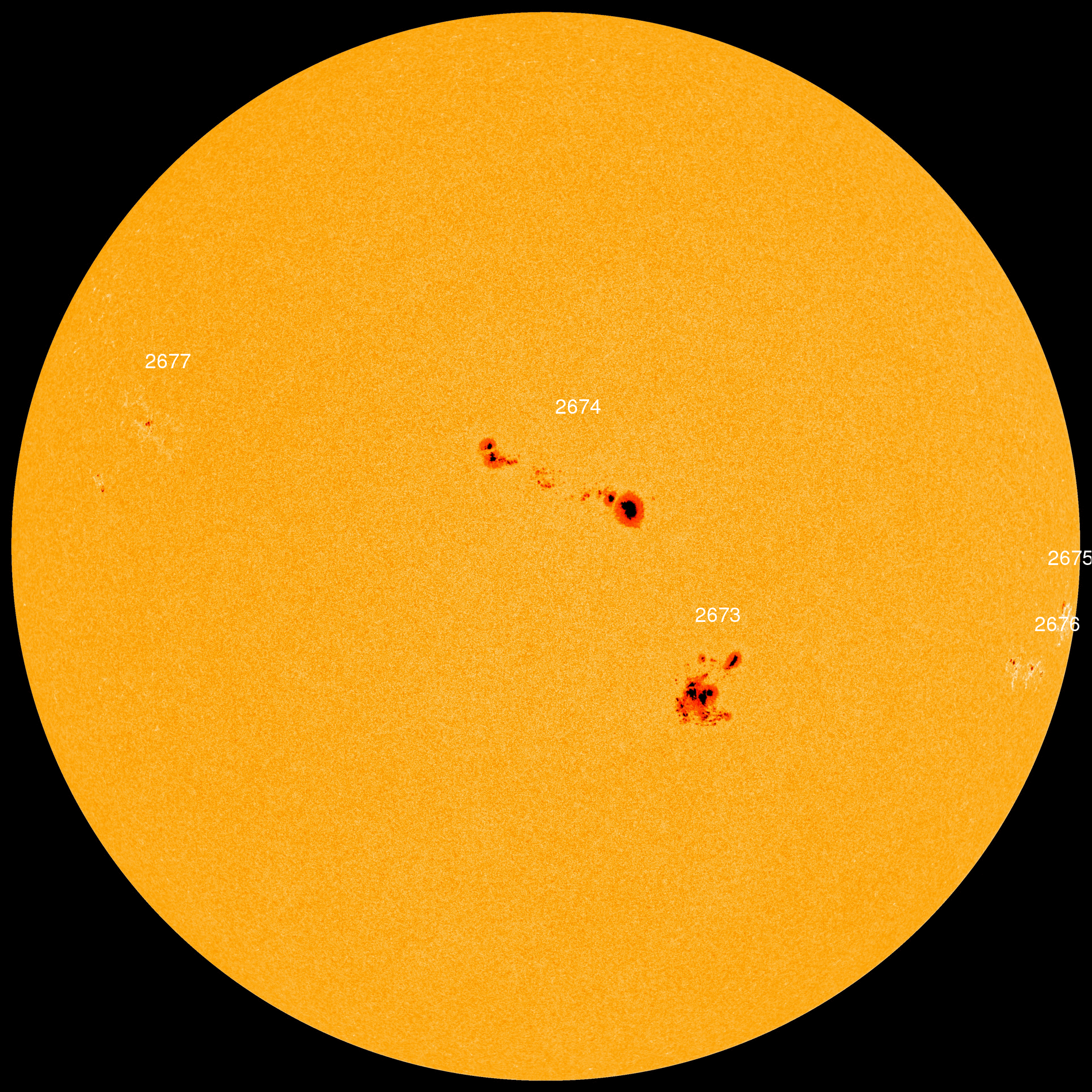

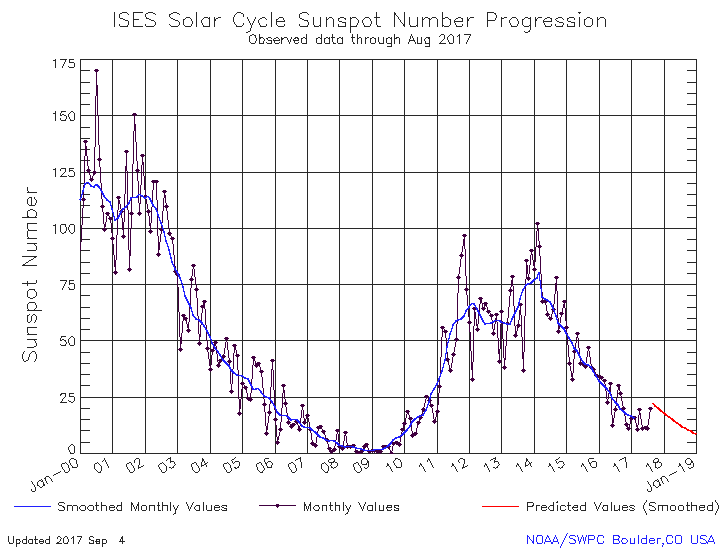
Posted Monday, August 28th, 2017 -
For many years, planet scientists expected episodes of snowfall on the Martian surface were to be very rare events. The expectation was that snowfalls would form in a similar way as they do on earth, specifically ice particles colliding and sticking to each other, then gaining enough mass for gravity to overcome atmospheric turbulence whereupon the "flakes" would fall to the ground. Although Mars does have water vapor in its thin atmosphere, it has much less of it, so the clumping and "flake" accumulation was expected to be much less. Moreover, Mars is less massive than the Earth, so its gravitational pull is weaker. Both of these ideas led scientists to assume that snowfall events are rare, and yet in 2008, NASA's Phoenix lander surprisingly detected evidence of snowfall on the Martian surface - very unexpected!
Now, researchers based in France have published an article in Nature Geoscience suggesting snowfalls on Mars are common, but occur only during the Martian night. They are produced by atmospheric instability resulting from rapid cooling of water-ice cloud particles once the Sun sets on Mars. See news article and link to publication.
SAO/NASA ADS
ASTRO-PH
NASA/IPAC Extragalactic Database
APOD
spaceweather.com
WVXU
The New York Times
CNN
Politico
Slate
The Fiscal Times